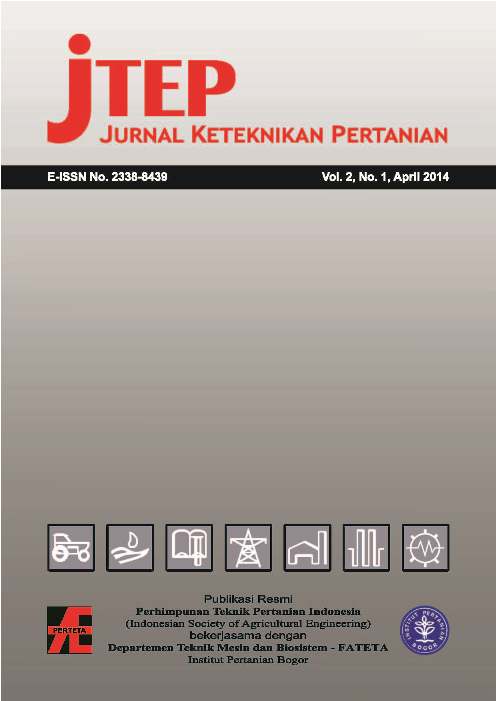Rancangbangun Aplikator Kompos untuk Tebu Lahan Kering
Abstract
Abstract
The widely sugarcane plantation area in Indonesia causes the management of sugarcane litter conducted by mechanization. To manage sugarcane litter into compost needed several machineries such as tractors,
trash rakes, trailesr, choppers, trucks, composting turner, loaders, and compost applicators. The objective of this study was to design a compost applicator for sugarcane litter that can be used for a plant cane and
ratoon in dry land. The process of making a prototype applicators follow the design flowchart that begins with the calculation of the dimensions, design of engineering drawings, selection and material purchases. The result showed that the applicator prototype with belt conveyor metering device could function well and was able to apply the compost with a high dose (15 ton / ha).
Keywords: mechanization, compost applicator, compost, sugarcane litter, sugarcane
Abstrak
Areal perkebunan tebu di Indonesia yang luas menyebabkan kegiatan pengelolaan serasah tebu dilakukan dengan mekanisasi. Untuk mengelola serasah tebu menjadi kompos dibutuhkan beberapa
teknologi seperti traktor, trash rake, trailer, alat pencacah, truk, pengaduk, loader, dan aplikator kompos. Tujuan penelitian ini adalah merancang aplikator kompos serasah tebu yang dapat dioperasikan untuk
tanaman tebu baru (PC) dan tebu keprasan (ratoon) lahan kering. Proses pembuatan prototipe aplikator mengikuti alur perancangan alat yang diawali dengan perhitungan dimensi, disain gambar teknik dan pemilihan serta pembelian bahan. Hasil penelitian menunjukkan bahwa prototipe aplikator dengan penjatah tipe belt conveyor dapat berfungsi dengan baik dan mampu mengaplikasikan kompos dengan dosis tinggi (15 ton/ha).
Kata kunci : mekanisasi,aplikator kompos, kompos, tebu, lahan kering
Diterima: 27 November 2013; Disetujui: 19 Februari 2014
Authors
Authors submitting manuscripts should understand and agree that copyright of manuscripts of the article shall be assigned/transferred to Jurnal Keteknikan Pertanian. This work is licensed under a Creative Commons Attribution-ShareAlike 4.0 International License (CC BY-SA) where Authors and Readers can copy and redistribute the material in any medium or format, as well as remix, transform, and build upon the material for any purpose, but they must give appropriate credit (cite to the article or content), provide a link to the license, and indicate if changes were made. If you remix, transform, or build upon the material, you must distribute your contributions under the same license as the original.

